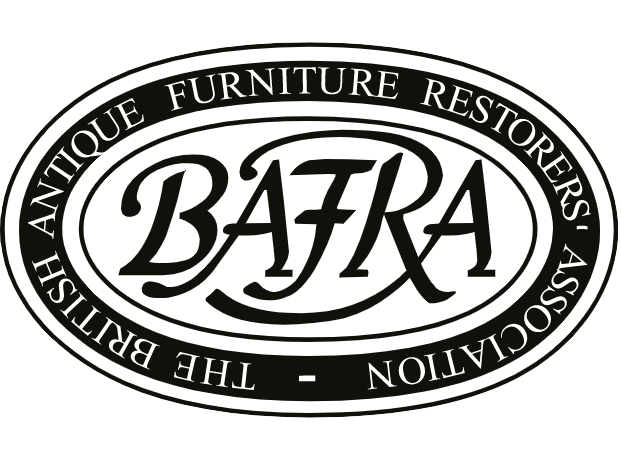
Disaster Management of Antiques & Antique Furniture
At BAFRA, we provide access to disaster management for antiques and antique furniture. Every member has been rigorously assessed and vetted. Our members are all established businesses that are fully accredited and work to the highest standards and ethics.
Disaster Management at BAFRA
Disaster management for antiques and antique furniture is crucial to preserving these valuable artefacts and treasures in the face of unforeseen events. Antiques, often delicate and irreplaceable, require special attention to safeguard against natural disasters, accidents, and other emergencies. BAFRA recognises the unique challenges posed by unforeseen events and emphasises proactive measures to safeguard your antiques.
To protect antiques from natural disasters such as floods or fires, proper storage conditions are imperative. Elevating furniture off the ground, using climate-controlled storage units, and employing disaster-resistant materials for storage containers are effective preventive measures. Our restoration experts endorse strategic placement and secure fastening techniques to minimise risks. Fire-resistant barriers and wall-securing methods enhance disaster resilience while preserving the integrity of antique pieces.
Regular inspections and maintenance routines contribute to a comprehensive disaster management strategy. By integrating these principles, our restoration website aims to empower collectors and enthusiasts to proactively safeguard their cherished antiques, fostering a legacy that endures for generations to come.
Disaster Management FAQs
What is disaster management of antiques?
Disaster management of antiques involves the organisation and planning of measures preparing for and recovering from disasters. The process involves the management and planning services required for artwork, such as paintings, sculptures and antique furniture, both before or after a disaster. Disaster management helps to minimise the damage caused to your antiques by anything from small domestic incidents to arson and includes fire and water-damaged furniture restoration. It also includes strategies for documentation, secure storage, and preventive measures to minimise damage and aid in efficient recovery.
Why is documentation important in disaster management for antiques?
Documentation is vital in disaster management for antiques as it serves as a critical tool for preservation and recovery. Detailed records, including descriptions, photographs, and appraisals, provide a comprehensive inventory essential for insurance claims. In the aftermath of a disaster, this documentation becomes a roadmap for restoration efforts, enabling professionals to identify and prioritise damaged items. Digital storage and secure off-site backups ensure accessibility, even if on-site records are compromised. Overall, thorough documentation not only safeguards the financial value of antiques but also preserves their historical and cultural significance, facilitating a more efficient and informed restoration process.
What preventive measures can be taken to protect antiques from natural disasters?
To shield antiques from natural disasters, several preventive measures are imperative. Elevating antique furniture off the ground minimises exposure to floods. Climate-controlled storage units help maintain optimal conditions, preventing damage from extreme temperatures and humidity. Employing disaster-resistant materials for storage containers adds an extra layer of protection against unforeseen events. Strategic placement within a space, securing items to walls, and utilising earthquake-resistant mounts enhance resilience during seismic activities. These measures collectively fortify antiques against the destructive forces of nature, ensuring their longevity and safeguarding their historical and cultural value.
How often should inspections and maintenance be conducted for antiques?
Regular inspections and maintenance for antiques are crucial to ensure their ongoing preservation and resilience. Conducting thorough assessments at least twice a year allows for the early identification of vulnerabilities, such as pest infestations, structural issues, or environmental damage. Prompt maintenance, including cleaning, repairing, and addressing any concerns, prevents small problems from escalating into major restoration projects. This proactive approach helps maintain the integrity and value of antiques over time, providing collectors and enthusiasts with the opportunity to address potential issues before they compromise the condition and historical significance of these cherished antiques.
Are there specific storage requirements for different types of antiques?
Yes, specific storage requirements exist for various types of antiques. Delicate items such as paintings or textiles may necessitate climate-controlled storage to mitigate the effects of temperature and humidity fluctuations. Fragile furniture might benefit from elevated storage to avoid potential flood damage. Musical instruments may require controlled humidity to prevent warping. Understanding the unique needs of each antique type is essential for effective preservation. Customised storage solutions tailored to the antiques' materials, age, and sensitivity ensure their longevity, safeguarding these cultural treasures from deterioration and potential damage.
How can collectors safeguard antiques during transportation?
To safeguard antiques during transportation, collectors should employ meticulous packing and securing techniques. Specialised packaging materials, such as bubble wrap and custom crates, protect items from vibrations and impacts. Fragile components, like glass or delicate surfaces, should be covered and padded. Securing antiques within the transportation vehicle using straps or braces prevents shifting and potential damage. Hiring experienced antique movers, well-versed in handling delicate antiques, ensures a safe and expertly managed transport process. Prioritising caution, proper packaging, and professional assistance collectively contribute to safeguarding antiques, preserving their integrity during transit.
Why choose a BAFRA-accredited member for disaster management of antiques?
The importance of having antiques managed after a disaster by a BAFRA-accredited qualified craftsman cannot be stressed enough. Our members can provide high-quality restoration, fully repairing and restoring damaged antiques caused by a disaster. Providing an assessment, visiting the property, advising on damaged items and compiling a detailed report for insurance companies. Assessing the extent of the damage and then working methodically to restore your damaged antiques and antique furniture. BAFRA members have in-depth knowledge based on more than 20 years of experience in disaster management.
Find BAFRA Accredited Disaster Management Specialists
All accredited, full members are required to have at least five years as a conservation-restoration professional (the average member today has 23 years of experience) and pass an exacting assessment on their skills, knowledge and business credentials. Our members acknowledge the importance of continuous professional development to keep abreast of advances in knowledge, skills and technical developments in disaster management.
Find BAFRA-accredited disaster management specialists near you by clicking the button below and entering your postcode.

